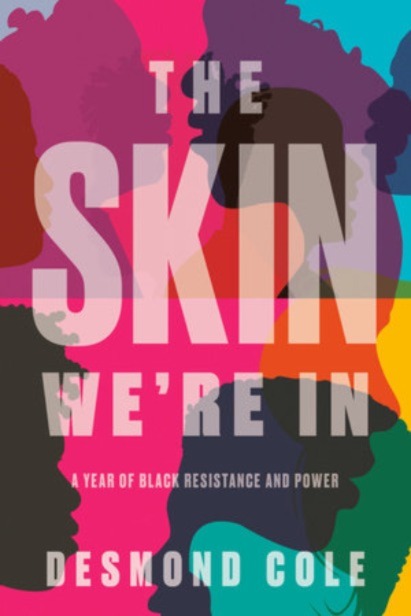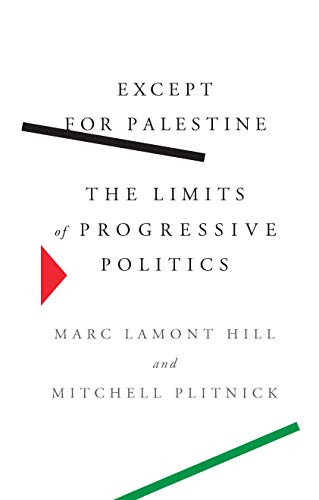The Right to Main: Debility, Capacity, Disability, Jasbin K. Puar, Duke University Press, 2017, pp. 267, ISBN: 978-0-8223-6918-9
Read any column written by the Israeli journalist Gideon Levy, and you will be overwhelmed by the brutality exerted on the Palestinian population currently living under occupation. Levy has been documenting crimes of the occupation since 1988, and his stories are replete with indiscriminate violence that leaves Palestinians dead, maimed, homeless and controlled. No geopolitical space better illuminates the conditions that produce disability through acts of disablement than Palestine and the global south. Moving beyond an isolated disabling event, the occupation highlights that disability is a product of a vast bureaucratic, infrastructural, and ideological machinery applied by the state on a specific population that renders it maimed.
Puar’s is an emotionally draining book to read. Her use of language incites powerful emotions and, when applied to her treatment of topics surrounding the Israeli occupation of Palestine, was always bound to cause outrage among sections of the academia and population tasked with vehemently protecting the image of Israel. Not least due to the difficulty of otherwise engaging with Foucaldian and Deleuzean concepts that riddle the narrative. Naturally, when The Right to Maim received the Alison Pipemeier best book award in feminist disability studies from the National Women’s Studies Association, it led to accusations of anti-Semitism being levelled at her publisher, Duke University Press. Even though it forms the last third of the book, Puar’s discussion of Palestine is developed within the broader context of the American Empire, for it is the support of the US that enables the Israeli state to pursue its policies in Palestine. Moreover, Israel provides a justification and legitimation of settler-colonialism in the US. In the book, she notes that she does not exceptionalize Palestine as a site disjointed from the operations of world capitalism and US hegemony, nor other sites of settler-colonialism, be it Canada, Australia or Kashmir. Palestine’s occupation is thus a structure and a process rather than an event, which is, again, what the book is about. The event itself is an iterative process and a corollary of the structure that makes it, and in its repetition, ensures the reproduction of occupation.
In Jasbir K. Puar’s incredibly dense yet illuminating book The Right to Maim, she shows how mainstream neoliberal discourse separates the individual from the state and conceals the relationships that render an individual disabled. At the core of Puar’s book is her insistence on the conditions of state violence that structure everyday lives and represent deliberate attempts to debilitate. The state’s pursuit of war, imperialism, and maintenance of hyper-capitalism necessarily create surplus population of the excluded who cannot fit in the framework which these paradigms necessitate. Moreover, Puar shows how the universalization of human rights discourse on disability rights compress space and fails to account for different degrees of disability, or the difference between the rich and the poor, the settler-colonial and the marginalized. As she states, “disability exists in relation to assemblages of capacity and debility, modulated across historical time, geopolitical space, institutional mandates and discursive regimes.” In turn, she constructs the notion of debility to show how some bodies are always made available for injury in the pursuit of neoliberal capitalist goals, slowly worn down by socio-economic conditions and/or brute force. Debility is thus a critical biopolitical method of racializing, marginalizing and extracting value from bodies. By deploying and contrasting it with capacity, the state succeeds in reproducing these precarious populations.
Throughout her book, she applies her concept of debility to various contemporary social issues. She challenges the Americans with Disabilities Act and shows how it “reifies standards of bodily capacity and debility through the reproduction of gender normativity as integral to the productive potential of the disabled body.” She analyzes the nexus between the ADA and transsexuality and shows how the ADA discriminates against trans people by pathologizing and medicalizing their bodies. Notably, Section 12211 (b) includes transsexuality alongside such criminal behaviours as pedophilia, voyeurism, kleptomania and pyromania as conditions that the term disability for the purpose of the act excludes. Disability is thus used to frame transsexuality by reproducing gender normativity. By excluding trans people from the ADA’s protections, the state carves a space “of permissive employer discrimination.” It marks the trans body as nonconformant to the needs of capitalism, differentiating its productive capacity. The state’s ability to recognize disability produces a state of permanent debility for those who do not fit the categories.
From the ADA, Puar turns to Israeli pinkwashing, “a piece of propaganda highlighting the LGBT rights record of Israel as a function of obscuring or legitimating its occupation of Palestine,” supposedly representative of Israeli democracy and in stark contrast to Arab homophobia. Puar argues that Israeli pinkwashing functions as “a form of discursive preemptive securitization that marshals neo-orientalist fears of Palestinians as backward…and as an intense mode of subjugation.” Promoting its inclusivity and openness to all non-Palestinians, Israel conceals its founding narrative based on Palestinians’ expulsion and banishment. It stands as a beacon of protection against the backwardness of its surrounding. With the spectre of protection, there looms a threat of disability as a result of war, suicide bombing, or attacks. This spectre of threat by Palestinians is then turned against the Palestinians themselves in the form of occupation, with all its debilitating effects. Puar deems this the instrumentalization of disability, where the threat is used as a justification to inflict.
In chapter 4, the book focuses on the practices of the Israeli army and derives from them the eponymous “right to maim.” Citing Israeli scholars, Puar outlines the shooting policy, which aims to incapacitate Palestinians while maintaining a low casualty count to prevent transnational solidarities and sympathy. Deliberate maiming is thus presented as a tactic to control and maintain the occupation. The consequences of leaving bodies disabled in a territory with a collapsing health-system and where medicines are rationed, as a consequence of the embargo and targeting of health institutions in wars, leads to further deterioration of Palestinians’ conditions. The humanity of letting live is thus contrasted with the consequence of not letting die, blurring and questioning the lines separating life and death in an area whose inhabitants suffer perpetual slow violence. Yet, as mentioned, the shoot to maim policy qualifies the IDF as “the most moral army in the world.” “Maiming becomes a primary vector through which biopolitical control is deployed in colonized space,” as Puar states, couched behind the desire to avoid civilian casualties.
Moreover, the resistance allows Israel to treat Palestine as a testing ground for its various military technologies, integrating the population within its political economy by way of rendering them available for injury. All this in an area where checkpoints, roads that intersect Palestinian villages and from which Palestinians are excluded, make any medical emergencies impossible to tend to and act as another form of spatial debility imposed on Palestinians. Biopolitics thus renders any future resistance impossible while ensuring the perpetuation of the occupation.
The Right to Maim offers an incredibly powerful analysis of the relationship between bodies, state, and capitalism. It introduces the concept of debility, which defines populations excluded from accessing social resources of citizenship through the normal functioning of settler colonial capitalism. It is an incredibly powerful book that has the power to transcend disciplinary boundaries and whose framework can be applied to various fields. It makes for an incredibly difficult read, but with the reader’s perseverance comes the reward of being introduced to a novel approach in analyzing disability and biopolitics.




